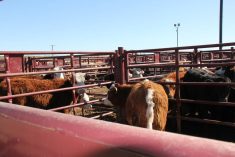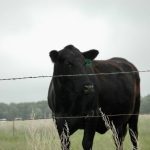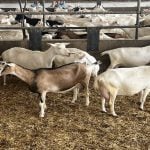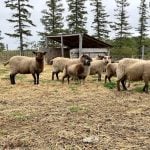As grizzly bear numbers stabilize and perhaps increase, what can ranchers in Alberta and B.C. do to stay safe?
Cattle producers are no strangers to working through conflict and managing difficult relationships but imagine if your adversary is a 350-pound grizzly bear that has decided to help itself to one of your cows.
For beef producers living and ranching in bear country, managing carnivore conflicts is a reality and can evoke a lot of emotions among ranchers, conservationists and the public.
Conservation scientists estimate that Canada’s grizzly bear population is up to 29,000 bears with many more ranging across an international corridor from Wyoming up through Alaska. Pinpointing an accurate number, however, is difficult.
Read Also
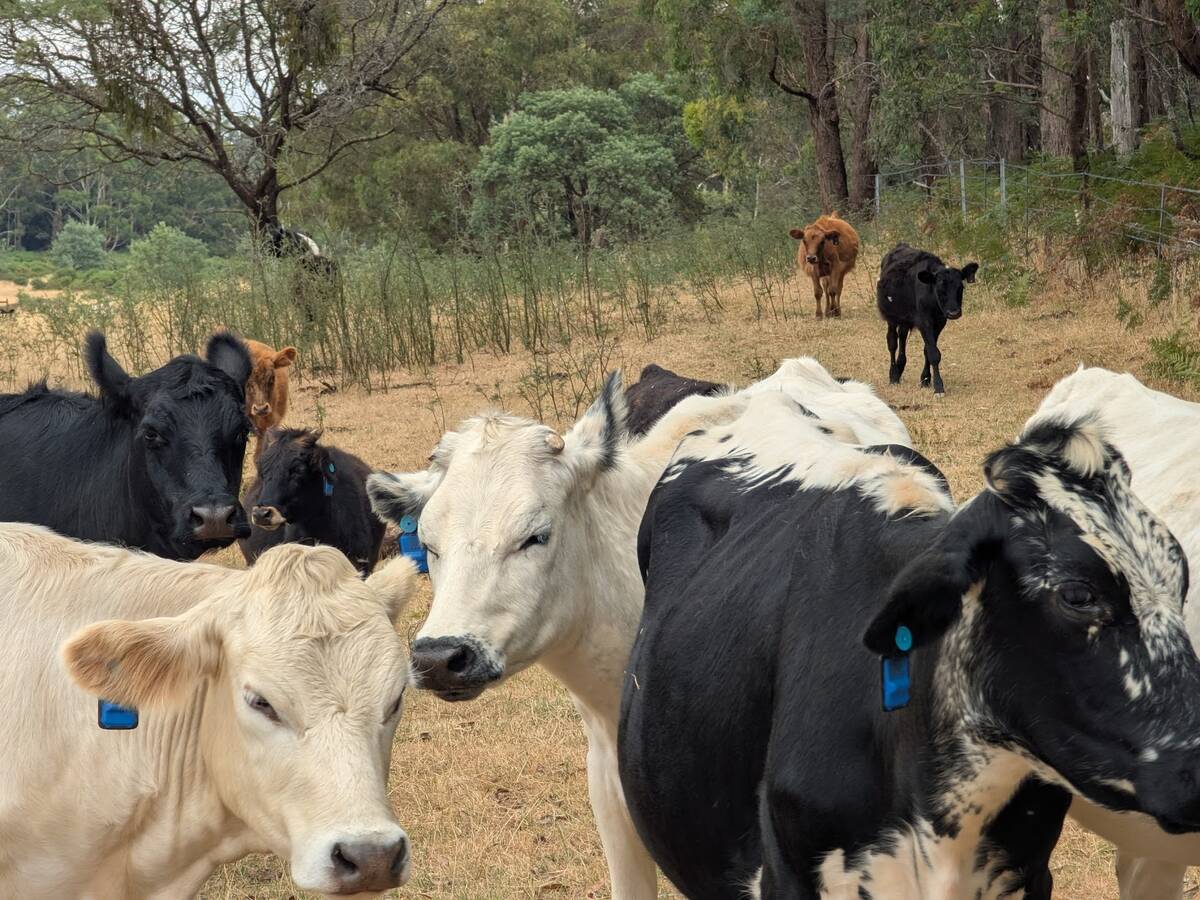
Australian company brings ear-tag tech to Canadian pastures
With Smart Paddock, beef farmers and ranchers can track their cattle through GPS technology
“Anecdotally speaking, I think everybody agrees that our grizzly bear numbers are doing well. They’re stable and I suspect increasing in many areas,” says Cam Hill, a rancher from Vanderhoof, B.C., and program co-ordinator for the B.C. Cattlemen’s Association’s Livestock Protection Program.
Currently, grizzly bears are protected in both Canada (under the Species at Risk Act) and in the U.S. (through the Endangered Species Act).
- RELATED: Manitoba trials address livestock predation in farmyards
- RELATED: Anti-predation program introduced in Manitoba
Bearing down
Hill spent decades as a park ranger and conservation officer before his current role and has navigated many situations dealing with large carnivores.
He says that a failed berry crop or rough hibernation conditions can increase the incidence of bear encounters. Practical prevention strategies will optimize safety as well as reduce the number of predation losses in livestock.
Jeff Bectell, a Cardston, Alta. rancher and co-ordinator of the Carnivores and Communities program for the Waterton Biosphere Reserve, says that crossing paths with grizzly bears is becoming more commonplace for his family and neighbours.
“In all of my grandfather’s lifetime, they had never seen a grizzly bear on our place, and then I think it was about ’92 or ’90 that we saw the first one,” says Bectell.
“Anytime you’re encountering a new problem, it gets people extra-excited, and so there was a lot of feelings in the community about it,” says Bectell. “Most people feel resentful a little bit about those kinds of impositions on their lifestyle, right?” he says, but adds that consultations and a collaborative approach help.
“When people work together, even on really prickly problems, it works better than if you don’t,” Bectell reasons.
Decreasing deadstock access
“Every rancher is going to have deadstock, so we promote best management practices and the most basic one is how you deal with any dead,” says Hill. “Leaving dead animals around irritates the problem.”

Hill says removing deadstock from your property to a landfill may be the simplest option. However, producers will need to look into necessary permits and local regulations.
In Bectell’s case, subsidized deadstock removal has become a big-ticket item for the Waterton Biosphere Reserve’s Carnivores and Communities program, with about 100 participating ranchers.
Before BSE, arranging for a rendering truck to pick up dead animals was a free service that many producers around Waterton took advantage of, says Jeff.
“Once BSE came and there became a charge, lots of people started leaving (carcasses) out on the hill again for the coyotes and birds to take care of,” Bectell says. Bears are quick to source a scavenging site.
“It’s not the be-all and end-all but it’s one attractant that we have some ability to manage,” Bectell says.
Both Bectell and Hill say that on-farm deadstock composting may also be effective if it’s done responsibly. “Composting can be really efficient, especially in combination with some sort of fence around the compost site,” Hill says.
Burying carcasses can also be an option. However, Hill cautions material must be buried deep.
“Carcasses should be buried at least eight feet deep, and we’ve had (grizzly) bears dig as far as 10 feet down to dig up a carcass,” Hill says.
He shared an example of a producer who re-buried a carcass deeper and deeper after a persistent grizzly bear continued to unearth it. The producer finally parked his excavator on top of the site to deter the stubborn bear.
Ecosystems aren’t simple
Bectell says people often look for a single solution to preventing grizzly encounters but a multi-pronged approach is more effective.
“For a farmer, everything that they do, everything that they are, is really a (bear) attractant,” he says. “You’ve got natural habitat, be it trees or native grasslands or sloughs. You’ve got your livestock, you’ve got a garden, you’ve got standing crops as well.”
The Carnivores and Communities program has provided financial incentives for more than 140 bear-deterrent projects on 60 different farms, in addition to their deadstock removal initiative.
“Other producers have done projects without any financial support so what’s happening is even bigger than the story we’re able to tell,” Bectell says.
Reducing access to stored feed is a valuable way to minimize ransacking, and Bectell has seen many creative solutions. He says as long as producers have an idea that might be bear-proof and there is less conflict as a result, the Waterton Biosphere Reserve is willing to explore that.
“We’ve provided bear-proof bin doors with a latch on it. If people want to replace wood floors with cement, for people bucket-feeding, we can modify different ways and put a shipping container out there,” he says. “It’s all about what works for you,”
Hill says electric fencing is another effective management tool. “Electric fencing works well for feed, and for smaller operations. Or particularly during calving season, putting an electric wire around the calving area can help,” Hill says.
Hill recommends using multiple strings of electric wire and says some producers even put a small amount of bait on an electric fence so a bear will go up and get a shock.
Predation problems
Both Alberta and B.C. have evidence-based predation compensation. With livestock valued at an all-time high, producers in each province have a lot of incentive to find and report livestock losses due to grizzly bears, but receiving compensation is not necessarily straightforward.
Hill says verification is a critical but complicated part of having a successful predation claim. “Before we’re able to compensate for losses, they need to have a carcass and evidence has to be on the carcass.
“The problem with grizzly bears is they consume a lot of protein in a short period of time,” Hill says. “Often, when they do make the kill, they’ll drag the carcasses into cover, and then they’ll hang around and they’ll uncover it and dig it up.
“They do a lot of rototilling and when they do that, a lot of the good evidence to verify that it’s a grizzly kill is constantly being lost.”
Bectell says Alberta’s program has similar challenges. “We’re glad it exists, but we’ve been advocating for over 10 years for changes to (predation compensation),” he says. “It works well when the kill can be confirmed, but the biggest complaint is when it can’t be confirmed.”
Hill trains verifiers — people who are trained to look for and collect evidence of predation, including ranchers wanting to self-verify. B.C.’s program also compensates for losses from wolf, coyote, cougar and black bear predation, so proper verification is key.
“We look for marks up high on the back, in the back of the neck. Grizzly bears like to target the face as well, then both the neck all up and down the spine,” Hill says.
Verifiers perform necropsies, pull the hide back, assess bite marks and measure the distance of the bite spread. “We want to determine that the heart was beating at the time that those sites were attacked,” Hill says.
“If during the verification process, we determine that the predator involved is a cougar or a bear, we turn the file over to the conservation services.”
Bear safety
For many years, the Waterton Biosphere Reserve has been hosting hands-on safety training geared toward farmers and ranchers.
“A lot of bear safety is targeted at recreationists,” says Bectell. “When they say there’s a bear in the area, (they say), ‘Stay out of that area.’ But when you’re working, it’s not a simple thing.”
“We thought, ‘Let’s tailor something that is applicable to the farm and ranch.’”
Bectell says grizzly bears have a reputation for being more dangerous or aggressive but farm families can become better aware and equipped to assess potential hazards to help offset the risk.
“Do you need to make noise as you’re going to the bus in the dark? Do you need to make noise when you’re feeding your 4-H calf in the morning before school?” Easy-to-implement habits and practices can help maintain safety.
During the training, every participant gets a chance to practice with bear spray as well as take a can home with them. “We’ve had a two-year-old up to a 92-year-old practice with it and that’s been really good,” he says, adding that proper training can provide confidence during a real-life encounter.
Hill feels the nature of ranch work and being close to the land can put producers at a higher risk for bear encounters, as can investigating a potential livestock bear attack.
“There’s a lot of incentive for a rancher to try and find a missing cow. In the case of a kill, there’s a substantial amount of risk involved,” says Hill. “I’m always worried that it’s just a matter of time until a verifier becomes the next victim of a bear attack.
“I’ve always really pushed that you need to have some defence mechanism with you,” Hill says. “A lot of people pack firearms but they’re really only good if they are on you.” Often, a firearm may be left on an ATV or the saddle, but packing bear spray in a holster on a belt is a good option.
Hill also recommends gaining an understanding of bear behaviour to learn whether an encounter may be predatory or defensive.
“When a bear is defending, there are a number of possibilities,” he says. A grizzly may be defending its own space, defending a food source, or cubs. Grizzlies can be more aggressive and dangerous if you come across a sow and her cubs, says Hill.
If an attack is predatory, prepare to employ your defence mechanism, Hill says.
When it comes to self-defence, ranchers can shoot a grizzly bear. However, they are legally obligated to notify conservation officers immediately. Hill says a followup investigation is likely.
Respectful co-existence
Hill says that producers have a role in reducing conflicts but also recognizing that not every predator is a problem. “If you have a large grizzly bear or black bear on your property that is not causing problems there, they could be a benefit because they will keep the younger, more problematic, teenage bears away.
“For me, a bonus to living in this part of the province is the wildlife,” says Hill. “But at the same time, we all as producers have to respond and it’s our responsibility to make every effort we can to co-exist with them.”
Bectell doesn’t feel negatively toward the large carnivores but rather has a cautious respect.
“As things have evolved, you’ve figured out a way to, hopefully, kind of share the landscape,” he says. “If I could turn the clock back and say, ‘Let’s never see a bear on the Bectell ranch again,’ I don’t know that I would.
“We think our work is very positive for our organization, positive for local communities, and the rest of the people in Alberta,” Bectell says. “We want people to know we are producing beef in a responsible way.
“It demonstrates that the agricultural community, when given an opportunity, is trying to do our part to decrease conflict.”





